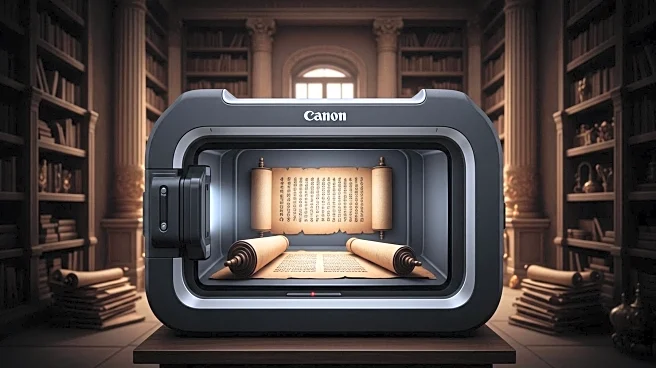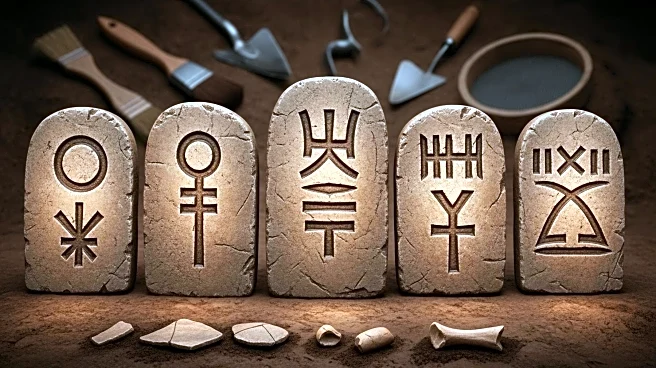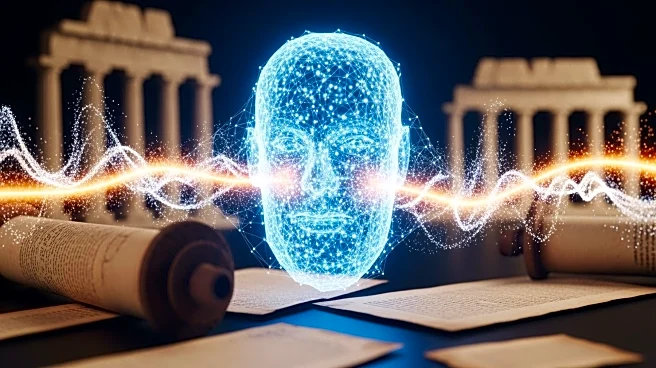What's Happening?
Researchers are using particle accelerators and artificial intelligence to read the contents of ancient papyri from Herculaneum, which were carbonized by the eruption of Mount Vesuvius in AD 79. The scrolls,
part of a library owned by Julius Caesar's father-in-law, contain works by the philosopher Philodemus. The use of advanced imaging techniques and AI has allowed scientists to begin deciphering these texts, potentially uncovering lost works of Greek philosophy and early Christian writings.
Why It's Important?
The ability to read the Herculaneum papyri offers a unique opportunity to access ancient knowledge that has been inaccessible for nearly 2000 years. This breakthrough could provide new insights into the philosophical and cultural context of the Roman era, enriching the understanding of historical texts. The use of AI and imaging technology in archaeology demonstrates the potential for modern tools to unlock historical mysteries, paving the way for similar applications in other ancient artifacts.
What's Next?
The research team plans to continue scanning and analyzing the remaining scrolls, with the hope of uncovering more texts from the Herculaneum library. The success of this project may encourage further excavations in the area, potentially revealing additional scrolls and artifacts. The ongoing development of AI and imaging techniques could lead to more efficient methods for reading ancient texts, expanding the scope of archaeological research.
Beyond the Headlines
The project highlights the intersection of technology and archaeology, showcasing how modern innovations can transform the study of ancient history. The collaboration between scientists and technologists in this endeavor may inspire similar interdisciplinary approaches in other fields. Additionally, the discovery of philosophical texts from Herculaneum could influence contemporary philosophical discourse, offering new perspectives on ancient thought.











